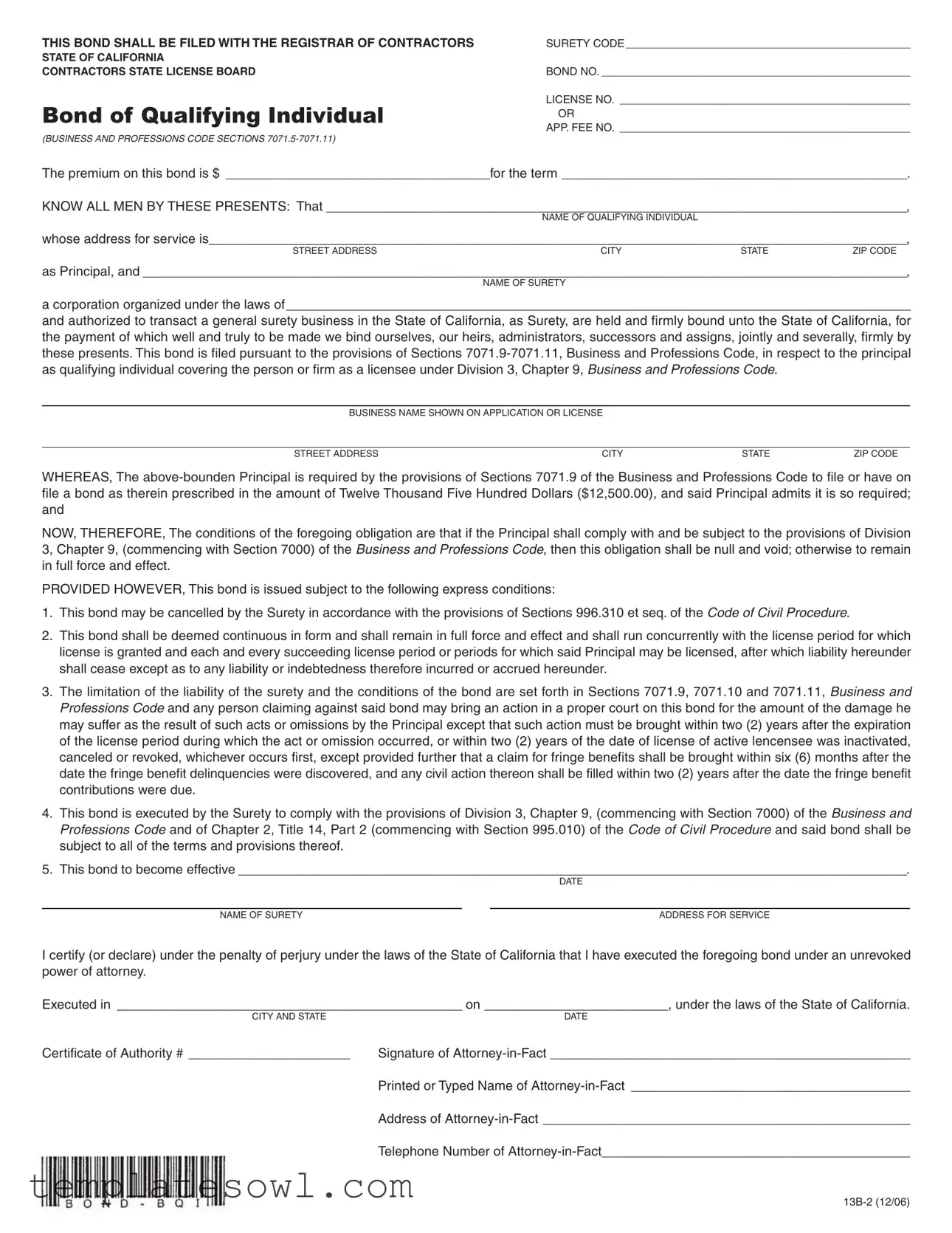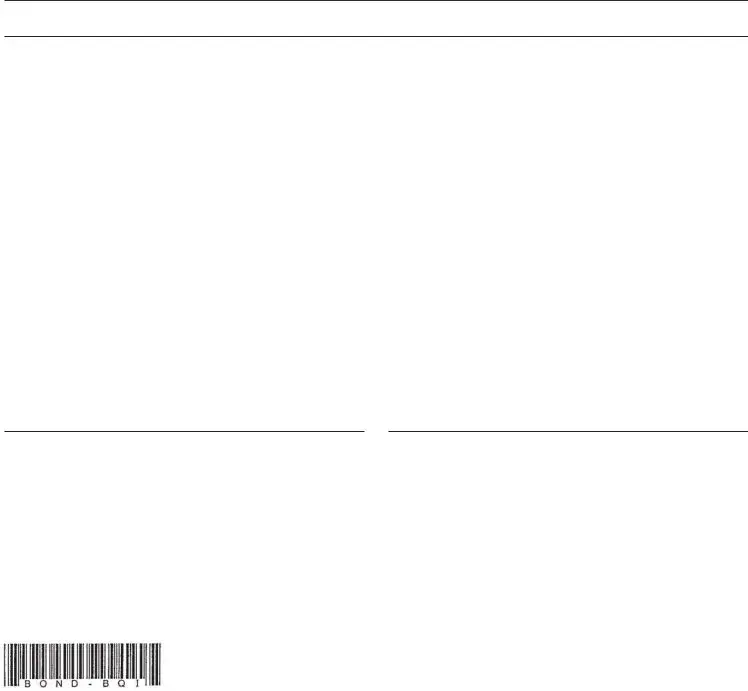|
THIS BOND SHALL BE FILED WITH THE REGISTRAR OF CONTRACTORS |
SURETY CODE _______________________________________________ |
|
STATE OF CALIFORNIA |
|
|
CONTRACTORS STATE LICENSE BOARD |
BOND NO. ___________________________________________________ |
|
Bond of Qualifying Individual |
LICENSE NO. ________________________________________________ |
|
OR |
|
|
|
|
APP. FEE NO. ________________________________________________ |
|
(BUSINESS AND PROFESSIONS CODE SECTIONS 7071.5-7071.11) |
|
The premium on this bond is $ ____________________________________for the term _______________________________________________.
KNOW ALL MEN BY THESE PRESENTS: That _______________________________________________________________________________,
NAME OF QUALIFYING INDIVIDUAL
whose address for service is_______________________________________________________________________________________________,
STREET ADDRESSCITYSTATEZIP CODE
as Principal, and ________________________________________________________________________________________________________,
NAME OF SURETY
a corporation organized under the laws of_____________________________________________________________________________________
and authorized to transact a general surety business in the State of California, as Surety, are held and firmly bound unto the State of California, for the payment of which well and truly to be made we bind ourselves, our heirs, administrators, successors and assigns, jointly and severally, firmly by these presents. This bond is filed pursuant to the provisions of Sections 7071.9-7071.11, Business and Professions Code, in respect to the principal as qualifying individual covering the person or firm as a licensee under Division 3, Chapter 9, Business and Professions Code.
BUSINESS NAME SHOWN ON APPLICATION OR LICENSE
STREET ADDRESS |
CITY |
STATE |
ZIP CODE |
WHEREAS, The above-bounden Principal is required by the provisions of Sections 7071.9 of the Business and Professions Code to file or have on file a bond as therein prescribed in the amount of Twelve Thousand Five Hundred Dollars ($12,500.00), and said Principal admits it is so required; and
NOW, THEREFORE, The conditions of the foregoing obligation are that if the Principal shall comply with and be subject to the provisions of Division 3, Chapter 9, (commencing with Section 7000) of the Business and Professions Code, then this obligation shall be null and void; otherwise to remain in full force and effect.
PROVIDED HOWEVER, This bond is issued subject to the following express conditions:
1.This bond may be cancelled by the Surety in accordance with the provisions of Sections 996.310 et seq. of the Code of Civil Procedure.
2.This bond shall be deemed continuous in form and shall remain in full force and effect and shall run concurrently with the license period for which license is granted and each and every succeeding license period or periods for which said Principal may be licensed, after which liability hereunder shall cease except as to any liability or indebtedness therefore incurred or accrued hereunder.
3.The limitation of the liability of the surety and the conditions of the bond are set forth in Sections 7071.9, 7071.10 and 7071.11, Business and Professions Code and any person claiming against said bond may bring an action in a proper court on this bond for the amount of the damage he may suffer as the result of such acts or omissions by the Principal except that such action must be brought within two (2) years after the expiration of the license period during which the act or omission occurred, or within two (2) years of the date of license of active lencensee was inactivated, canceled or revoked, whichever occurs first, except provided further that a claim for fringe benefits shall be brought within six (6) months after the date the fringe benefit delinquencies were discovered, and any civil action thereon shall be filled within two (2) years after the date the fringe benefit contributions were due.
4.This bond is executed by the Surety to comply with the provisions of Division 3, Chapter 9, (commencing with Section 7000) of the Business and Professions Code and of Chapter 2, Title 14, Part 2 (commencing with Section 995.010) of the Code of Civil Procedure and said bond shall be subject to all of the terms and provisions thereof.
5.This bond to become effective ___________________________________________________________________________________________.
DATE
NAME OF SURETY |
ADDRESS FOR SERVICE |
I certify (or declare) under the penalty of perjury under the laws of the State of California that I have executed the foregoing bond under an unrevoked power of attorney.
Executed in _______________________________________________ on _________________________, under the laws of the State of California.
CITY AND STATEDATE
Certificate of Authority # ______________________ |
Signature of Attorney-in-Fact _________________________________________________ |
|
Printed or Typed Name of Attorney-in-Fact ______________________________________ |
|
Address of Attorney-in-Fact __________________________________________________ |
|
Telephone Number of Attorney-in-Fact__________________________________________ |

